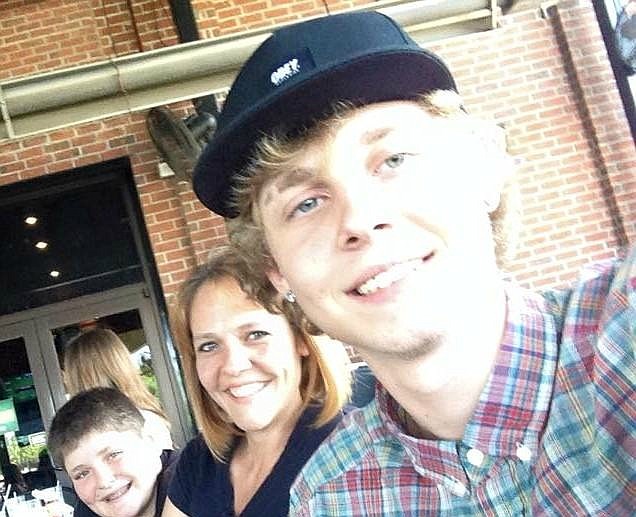- April 19, 2024
-
-
Loading

Loading

HORIZON WEST What started out as blurred vision for 18-year-old Kacey Wagner culminated Tuesday in a surgery called corneal collagen cross-linking.
Wagner, the son of Keene’s Crossing Elementary second-grade teacher Angela Anderson, originally was diagnosed with a cataract in his right eye two years ago at age 16. He was at a routine physical and the realization that something was wrong with his vision came when the doctor tested his eyesight.
“The doctor covered one eye, and Kacey said, ‘I can’t see anything,’ and I about had a heart attack,” Anderson said. “We took him to a pediatric ophthalmologist, who said it was a cataract, probably from trauma to the eye. (The ophthalmologist) said (because) he was only 16, it’s not an emergency, but come back when he was 18 and he can have the surgery.”
But after Wagner moved to Sebring a year ago to live with his father, he went back to see another eye doctor, who said he was misdiagnosed.
“They called me and the doctor said he didn’t have a cataract, it was keratoconus,” Anderson said. “I was told there is no cure; there’s nothing you can do except get a cornea transplant. It freaked me out because he was only 18.”
They went for a second opinion, and it was confirmed that Wagner had keratoconus, a progressive eye disease that thins the normally round cornea and bulges it into a cone-like shape. The cone shape deflects light as it enters the eye on the way to the retina, which causes blurred and distorted vision. Currently, Wagner has severe coning in his right eye and also some in the left.
“It’s weird because I’ve noticed it getting worse … over time,” Wagner said. “It’s kind of weird because I can see far (away), but it’s blurry, and I can tell my vision isn’t good. I can’t read stuff far away. I don’t see details. Nothing’s really crisp anymore. It’s annoying because I can’t focus on things in class.”
The cross-linking procedure involves applying liquid riboflavin — or vitamin B2 — to the surface of the eye, which is followed by controlled application of ultraviolet light, to eliminate the corneal bulging.
After the procedure, Wagner will get fitted for a special, hard contact lens that will “hug” his eye and improving his vision. He also will use special eye drops for a month afterward. The procedure has the potential to stop the keratoconus from progressing, but it cannot reverse what has already been done.
“I hope it works. I’m kind of nervous, but I hope I can see how I used to see.” — Kacey Wagner
Cross-linking is common in other countries — but very few doctors in the United States will perform the procedure, because it is not FDA-approved. For that reason, it’s also not covered by insurance. The procedure will cost $2,500 per eye, and that amount doesn’t include the contacts or eye drops.
“It’s frustrating because, had he been diagnosed two years ago, his sight wouldn’t be this bad,” Anderson said. “When you’re misdiagnosed with something like this, as a mother, I’m upset with myself for not getting a second opinion.”
Under the suggestion of a friend, Anderson created a GoFundMe page to raise money for Wagner’s medical costs. At press time, the campaign had raised $775 of the $5,000 goal.
“I wish more people were aware of this — even though it’s rare, it’s out there and it targets teenagers,” Anderson said. “We’re hoping this works and to let people know that this exists and not all doctors know about it. My main focus is to save what (vision) he has now before he loses all of it.”
“I hope it works,” Wagner said. “I’m kind of nervous, but I hope I can see how I used to see.”
Contact Danielle Hendrix at [email protected].